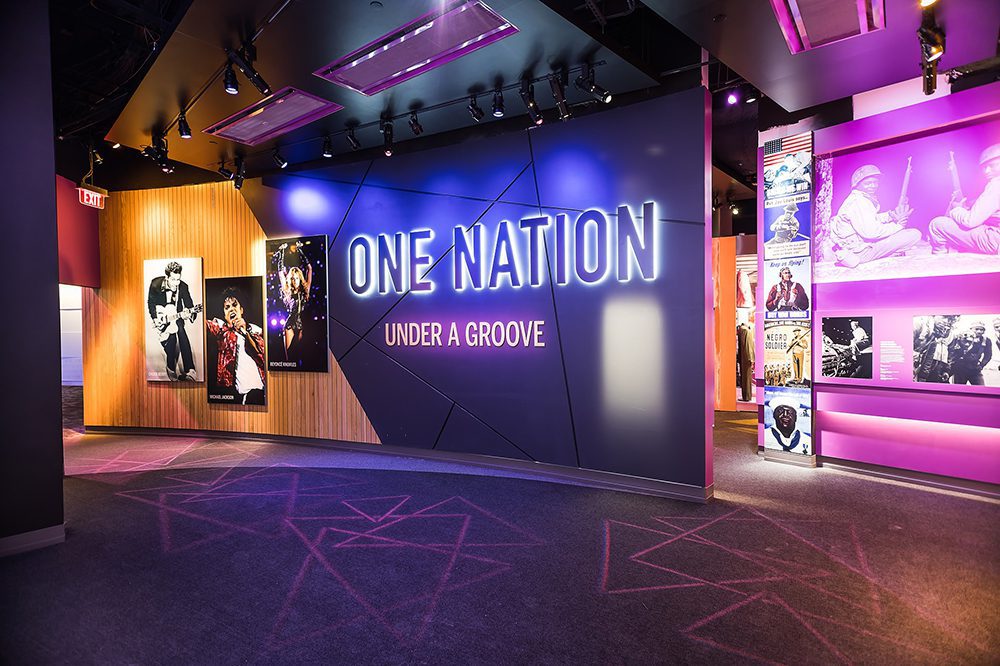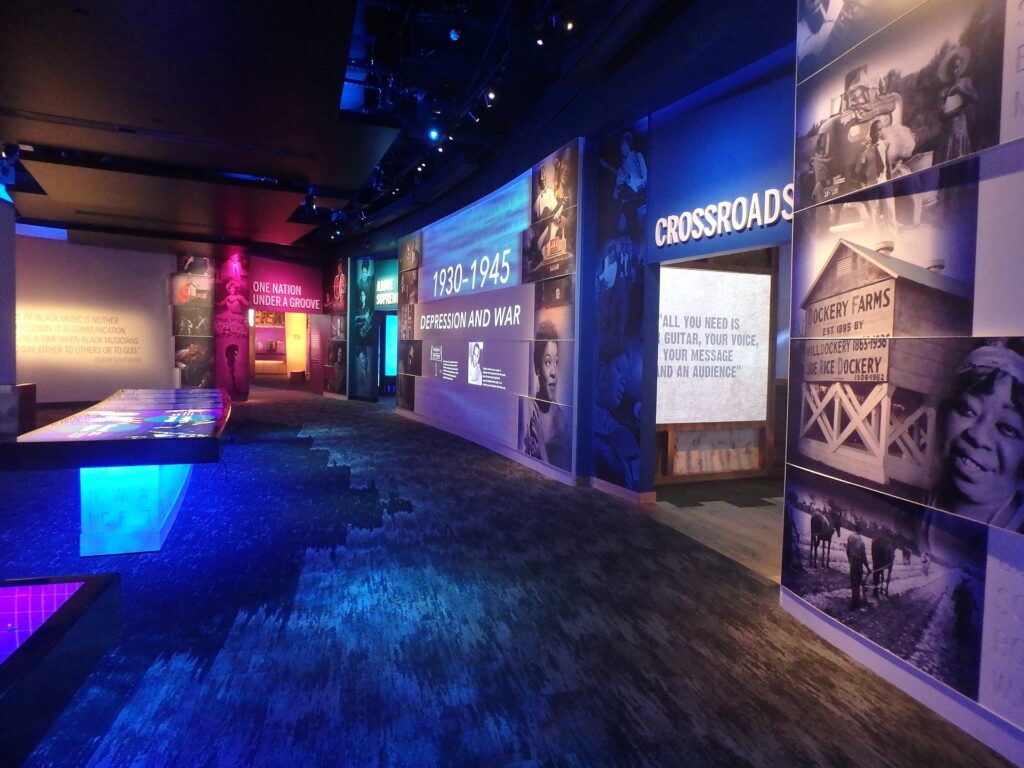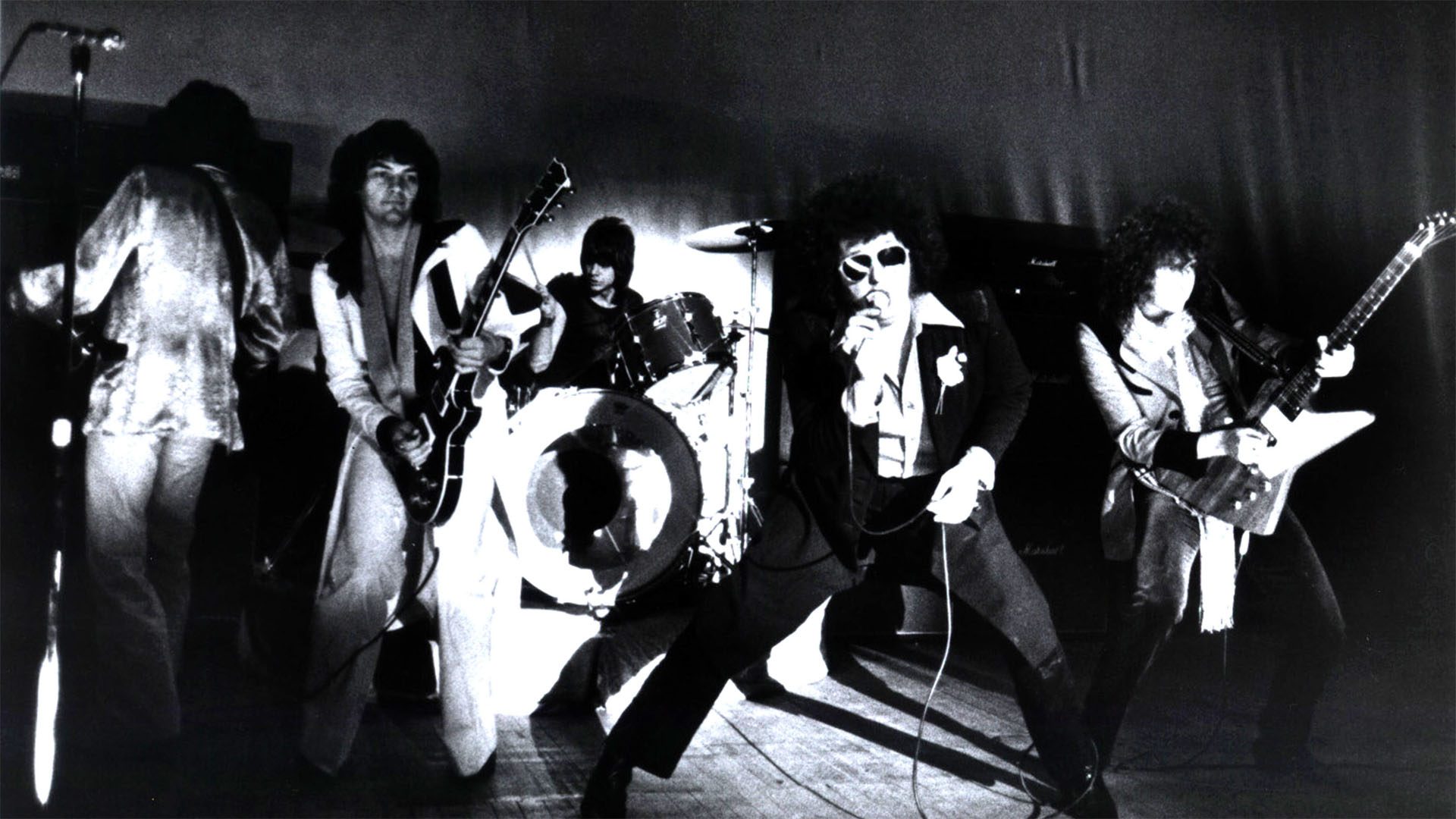At Nashville’s National Museum of African American Music, Culture is an Immersive Experience


“Music is a part of someone’s identity.” This message is one of the first to greet visitors upon entering the Roots Theatre inside the National Museum of African American Music in downtown Nashville. It’s a message that can be felt throughout the museum, beginning with a film introduction that explores the deep roots of music from its origins in Africa, tracing its evolution to present day as part of the museum’s purpose to “tell the story of how a distinct group of people used their artistry to impact and change the world.” At video’s end, the doors to the theatre magically open, inviting visitors into a vast world of music and culture that lives behind its walls.
Inside the “Rivers of Rhythm Pathways,” interactive tables allow you to explore Black music by decade, learning how music was used as a tool by slaves to communicate with one another, as demonstrated by “Wade in the Water,” a spiritual that Harriet Tubman would sing as she helped slaves escape on the Underground Railroad. Music acts as a thread, connecting generations to the Civil Rights movement in the 1960s through the hip-hop movement of the 1990s; patrons can even take the music home with them via a digital bracelet that compiles the songs you listened to into a playlist.
At any given moment, music will start bouncing off the walls – literally. A video displaying live footage of an incredible blues guitarist performing at B.B. King’s Blues Club guided us from “Rivers of Rhythm Pathways” into the other exhibits covering their own piece of history, ranging from “Crossroads,” which chronicles the history of blues music born in the Mississippi Delta, to the music of the Harlem Renaissance and Civil Rights Movement, completing the journey to modern day hip-hop and rap. While exploring these individual moments in history, as a country music reporter by trade, I couldn’t help but notice the cross-genre connections, particularly when seeing a photo of Academy Award nominated actress and hit blues singer Ethel Waters in one of her extravagant outfits, calling to mind the lavish ball gowns later worn by Loretta Lynn and flashy costumes Dolly Parton is famous for.

What makes NMAAM particularly compelling is the interactive element of the exhibits. In the “Crossroads” gallery, visitors have the chance to play a choose-your-own adventure game where you’re presented with a story of a woman living in rural Mississippi who must make a fight-or-flight decision as a flood threatens to destroy her home, or you can choose to follow the blossoming love story of a young couple in Chicago in the mid-20th century, the power lying in the user’s hands as to what decisions the characters make, with music guiding the story along all the while.
One interactive feature that became a personal favorite was a digital wheel displaying prominent artists throughout history including Billie Holiday, Nat King Cole, Ma Rainey, Sister Rosetta Tharpe, and Elvis Presley among several others, revealing what musicians they were influenced by and how they inspired other artists. It’s here I got to take pause and absorb the haunting melody and words of Holiday’s powerful “Strange Fruit,” yet feel a sense of calming and peace hearing King Cole’s soothing “Smile” and “Unforgettable,” becoming fully immersed in their timeless voices.
While NMAAM mostly focuses on the brilliance of Black artists and how the music they created moved culture forward, there are still glimmers of the pain and strife inflicted upon Black Americans, as told through a photo of a young woman screaming in terror as she escapes a riot in NYC in the ’60s, while another picture of a threatening sign that reads “we want Whites in this Whites only community” with an American flag perched next to it was particularly chilling, serving as a stark reminder that we still have a long way to go as a country when it comes to racial healing and equity.
But perhaps the best part of NMAAM is the makeshift dance club that’s at the heart of the museum. One can’t help but stop and join the crowd gathered around the room where patrons inside are dancing to Michael Jackson’s “The Way You Make Me Feel,” Montell Jordan’s “This Is How We Do It” and “Love On Top” by Beyoncé, their digital profiles projected onto a screen so they can see their moves on playback in real time. A few steps away, guests can keep their creative juices flowing in a music studio where they have the opportunity to become an artist themselves, creating their own beats and raps in a mock recording booth. It’s these types of feel-good elements that makes NMAAM stand out from other museums. Going beyond the typical format of objects displayed behind glass, instead bringing the history of the artifacts to life, all while creating a sense of community, elevates the experience. The soul of music can be felt inside this institution that conveys how Black music is not only an integral part of America’s identity, but that of the world at large.
Follow the National Museum of African American Music on Facebook, Instagram and Twitter for ongoing updates.



